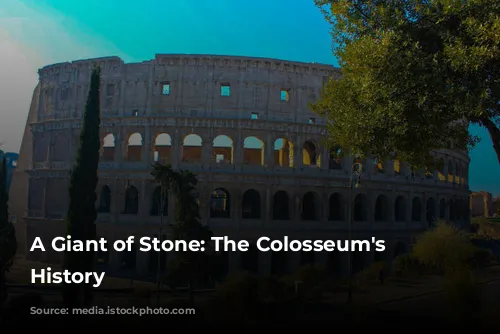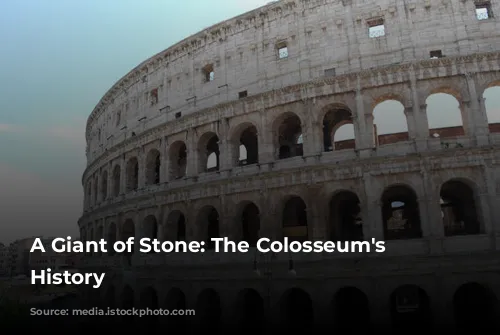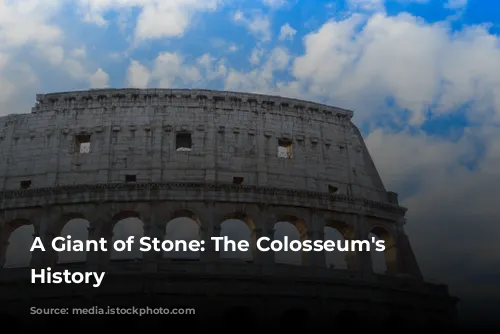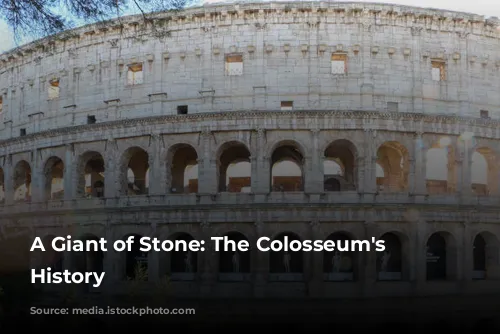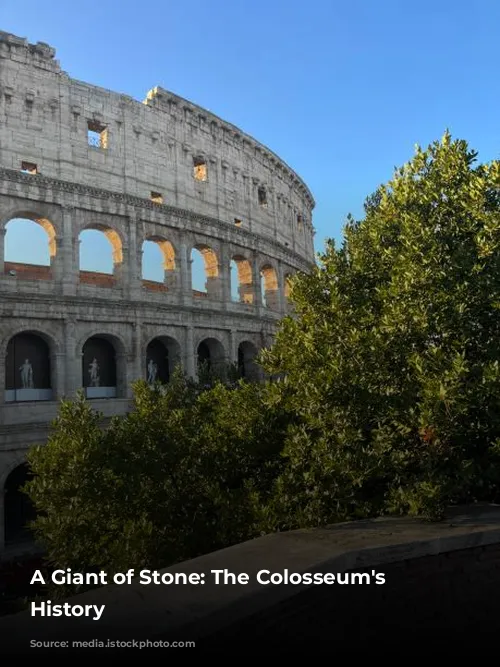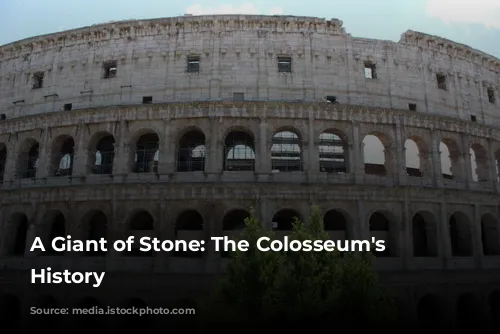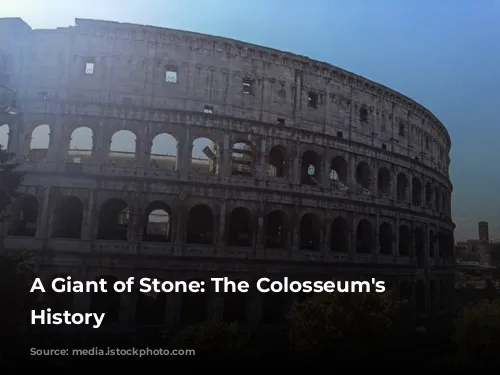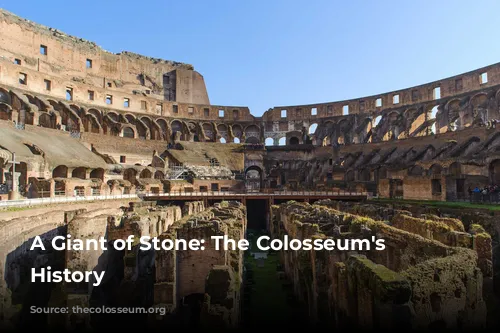The Colosseum, standing tall in the heart of Rome, is a breathtaking testament to the architectural prowess of the Roman Empire. It is the largest Roman amphitheater ever constructed, a colossal structure that has endured centuries of fires, earthquakes, and even human neglect. This mighty monument continues to inspire awe in all who behold it.
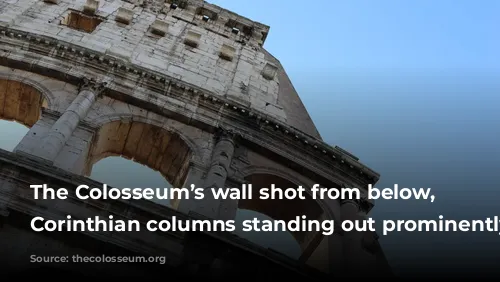
A Monument to Power and Popularity
The Colosseum, originally known as the Amphitheatrum Flavium, was built under the reigns of the Flavian Emperors – Vespasian, Titus, and Domitian – between 70 AD and 80 AD. It was a project of grand scale, commissioned by Vespasian in a bid to regain the favor of the Roman populace who had grown restless after the tumultuous reign of Nero.
The construction of the Colosseum was a massive undertaking, requiring a vast workforce. The majority of the labor was provided by Jewish slaves, captured during the First Jewish-Roman War. This massive structure was erected on the site of an artificial lake constructed by Nero for his Domus Aurea, transforming a former symbol of imperial excess into a symbol of Roman unity.
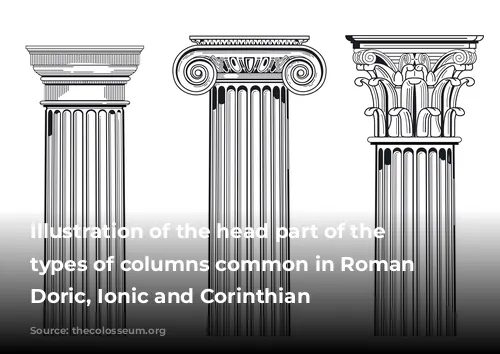
A Masterpiece of Engineering and Design
The Colosseum is an oval-shaped structure, measuring a staggering 189 meters in length and 156 meters in width. To put this into perspective, it is almost twice as long and one and a half times as wide as a modern football field! This impressive structure is a marvel of engineering, built using approximately 100,000 cubic meters of travertine stone, along with substantial amounts of Roman cement, bricks, and tuff blocks.
The travertine stone, quarried from the region around modern-day Tivoli, was used as the primary building material. An estimated 300 tonnes of iron clamps were employed to bind the massive blocks together, leaving visible pockmarks on the walls, a testament to their later scavenging.
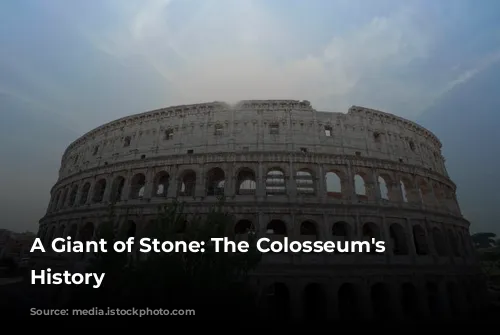
A Symphony of Architectural Styles
The Colosseum is a remarkable example of Roman architectural ingenuity, showcasing all three major architectural orders of the time. The ground floor features Tuscan columns, inspired by the austere Greek Doric style. The second floor boasts slightly more elaborate Ionic columns, while the third floor showcases the intricate and ornate Corinthian style. The Colosseum, therefore, transitions from simpler to more complex architectural styles as one ascends its tiers.
The building’s exterior is adorned with 80 arches, the largest of which grace the ground floor. These arches, each centered around a half-column, create a striking visual rhythm across the Colosseum’s facade.
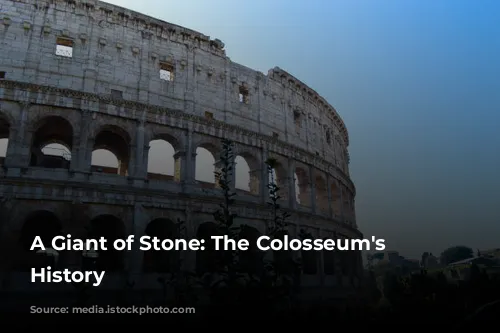
A Stage for Spectacle and Death
The Colosseum’s most striking feature is undoubtedly the arena, the heart of the gladiatorial games. Measuring 83 meters long and 48 meters wide, the arena floor was crafted from wooden panels and covered with a layer of sand, imported from the nearby Monte Mario hill. The floor was equipped with numerous trap doors, used to create dramatic entrances, exits, and special effects.
The arena was encircled by a 10-foot wall, separating the gladiators from the spectators. It was constructed from blocks of red and black stone, creating a stark contrast with the white travertine of the building.
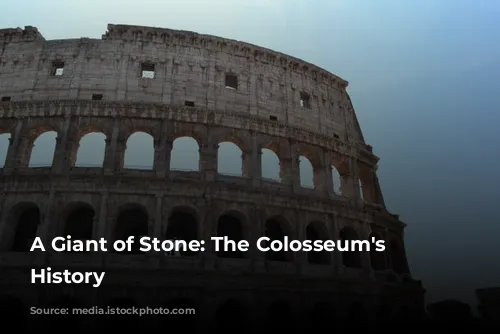
A Social Hierarchy in Stone
The arena was surrounded by a tiered seating structure known as the cavea, which was divided into three levels, reflecting the social hierarchy of Roman society. The podium, the lowest level, was reserved for the elite, including senators and high-ranking officials. As one ascended the cavea, the seating became less prestigious, with the top tier occupied by Roman citizens of lower social standing.
The seating was crafted from travertine stone, with each seat measuring approximately 40 centimeters wide. Wealthier spectators would bring cushions for comfort. The Colosseum was capable of seating a staggering 80,000 spectators, showcasing the grandeur of Roman entertainment.
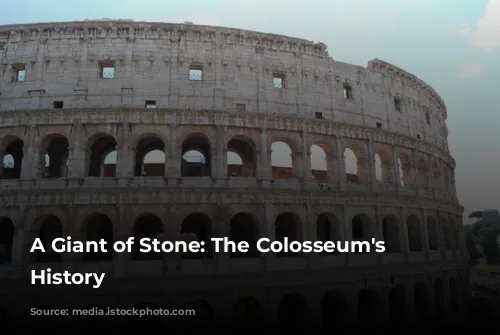
The Hidden World Beneath: The Hypogeum
Beneath the arena lay a network of tunnels and chambers known as the hypogeum. This subterranean complex, not part of the original design, was added during the reign of Emperor Domitian. The hypogeum served as a holding area for gladiators and animals, with 80 vertical shafts connecting it to the arena above. Gladiators and animals were raised to the arena floor using these shafts, some of which featured large moving platforms called hegmata.
The hypogeum was connected to the outside world through a network of tunnels, leading to the gladiators’ barracks, nearby stables, and even a private tunnel for the Emperor, allowing him to enter and exit the Colosseum without encountering the throngs of spectators.
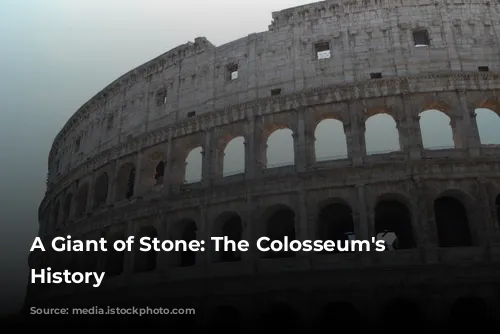
A Lasting Legacy
The Colosseum stands as a testament to the grandeur of the Roman Empire. Its immense size, its architectural ingenuity, and its enduring presence make it one of the most iconic monuments in the world. The Colosseum remains a captivating symbol of Roman history, offering a glimpse into the past and reminding us of the enduring power of human creativity and ambition.
